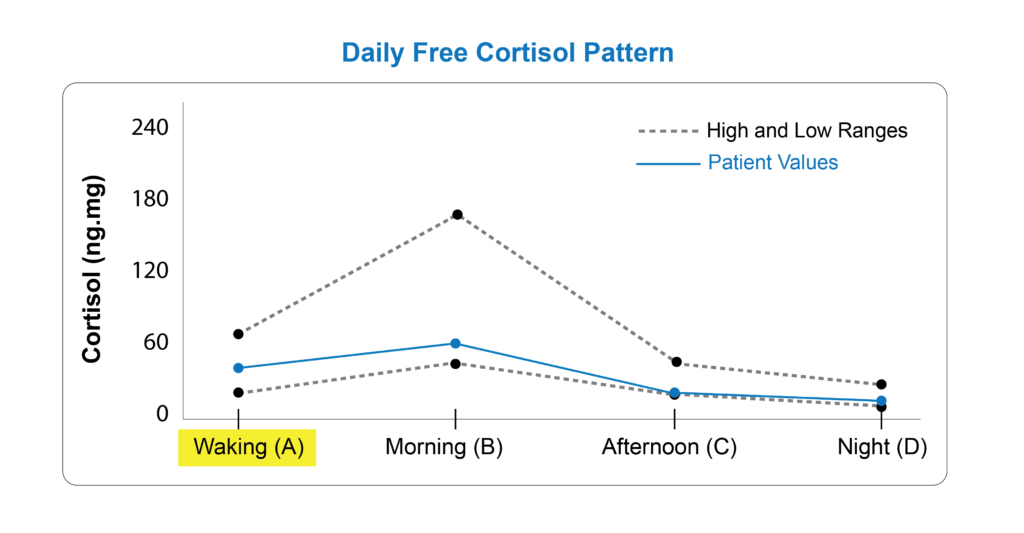What Does “Waking (A)” Represent in the Daily Free Cortisol Pattern?
by Carrie Jones, ND, MPH
Is your patient interested in knowing what their cortisol levels are in the middle of the night? Do they suffer from insomnia or wake routinely at 2am? Did they collect the DUTCH Test® middle-of-the-night sample for this reason? The DUTCH report now includes an individual cortisol value for this extra sample.
When patients sleep through the night and collect at waking, we get data point “Waking (A),” which is a measurement of free cortisol throughout the night. When patients wake and urinate in the middle of the night, there is an extra collection. This extra collection (usually around 1-3am) and the waking sample are measured separately and combined in a time-weighted average to create the value listed on the report as “Waking (A).” This value represents cortisol for the entirety of the night.
Providers have requested that these two values get reported separately, and we listened. The two individual values are now listed (for patients who do not sleep through the night while testing) in a comment on the report. When reading this comment, it will list the overnight sample as “A1” and the waking sample as “A2.” There are no concrete reference ranges as it depends on the time of waking. However, someone who woke close to midnight should have lower levels of cortisol. Whereas someone who woke within an hour or two of their alarm clock might have higher levels of cortisol since it naturally rises in the morning. Due to these differences, DUTCH lists the official “Cortisol Waking (A)” on the cortisol graph as a time-weighted average between A1 and A2. Again, it is time weighted as the person who woke at midnight to urinate then woke up again for work at 6:00am is different compared to someone who woke at 4:30am to urinate then woke up again for work at 6:00am.
Understanding the overnight (A1) sample is helpful in those who experience insomnia and cannot stay asleep. Ranges listed for the bedtime sample are 0-14, whereas the waking ranges are understandably higher at 12-55. If someone woke at 1:00am and their A1 cortisol result is 65, this would mean they are likely making excessive levels of cortisol at that time. Reasons for this vary, but include a fight or flight response, blood sugar problems, inflammation, pain, and anticipatory stress for the next day. Treatments are focused on addressing the cause but may also include cortisol calming agents if warranted such as L-theanine, Skullcap, Holy basil, Chamomile, and Magnesium before bed. Avoiding electronics, physical activity, sugar, and alcohol at night may help with sleep.
Another scenario where the individual values are helpful, is when the patient has their morning surge of cortisol (known as the cortisol awakening response) while in bed. If the patient wakes up to urinate at 4:00am and then wakes for the day at 6:00am and urinates again, their morning surge of cortisol may come between 4:00am and 6:00am or after they get up at 6:00am. Usually patients have this morning spike in cortisol once they get out of bed and are exposed to light. For the minority who have this increase while in bed, it is helpful to see these results. The clinical interpretation might be different from one patient to the next, but we don’t want to miss this important information.
Sleep is critical to the body as important healing and restoration to all cells happens during this time. Those who achieve less than the recommended 6-9 hours each night may experience fatigue, brain fog, lack of motivation, weight gain, trouble concentrating, mood swings, increased illness or inability to properly fight illness, and more. If your patients are struggling with any of these symptoms, the DUTCH Test is a great way to get the most information to guide on the pathway towards overall health.



